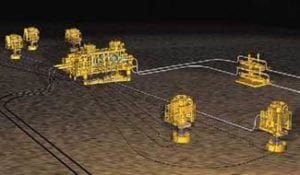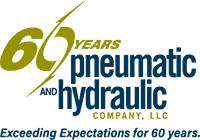How to Ensure Hydraulics Survive Subsea
One of the greatest innovations to the safety of oil and gas exploration has been the use of remote operated vehicles (ROVs) and hydraulics used to perform subsea operations once performed by humans. The oil and gas industry uses ROVs and hydraulics to perform pipeline operations on the ocean floor. The main benefit of this is that humans don’t need to go thousands of meters below the surface of the sea where the pressure they would endure is dangerously high.
Hydraulic valves and cylinders are used to drive manipulator arms, drilling tools and track drives. These subsea hydraulics are controlling ROVs to handle drilling, trenching, and digging. There are many challenges and engineering obstacles to think about when faced with choosing the proper equipment for these subsea operations. The task then presented for project managers is choosing and implementing the equipment that they believe can endure and safely perform the tasks of a subsea drilling project. A subsea accident can derail a project completely, not to mention the serious environmental and safety issues a spill can cause, so every step of a subsea project must be methodically thought out and executed correctly.
- Choose the right equipment.
It all starts with the equipment you choose for the project. Subsea drilling will only run as good as the hydraulic equipment powering it. In order for hydraulics to work properly in deep sea conditions, not only must the materials be able to resist the high pressure of being at such depths, but it’s essential that they can handle the salt present in the seawater.One of seawater’s adverse powers is its ability to corrode materials popularly used on some hydraulic equipment. Therefore, protection against this corrosion is essential. Using equipment built with stainless steel is a good way to ensure the longevity of your subsea equipment. Aside from stainless steel, corrosion can also be prevented by using equipment manufactured with special protective coatings. Both will immensely increase the longevity of your hydraulic equipment in salt water. - Maintain your equipment.
Aside from corrosion, hydraulic equipment must be properly maintained and inspected to ensure there isn’t any water mixing with the hydraulic fluid. Water entering a hydraulic system can cause rust and eventually leaks. For hydraulic equipment used in marine environments, inspection and regular preventative maintenance practices will get the most out of your equipment, ensuring you that water isn’t infiltrating your equipment.
Common hydraulic equipment components to inspect regularly include:

- Oil levels and contamination
- Fittings
- Hose assemblies
- Threaded ports
- Filtration
- Brackets and clamps
Machinery used in subsea drilling operations should run smoothly and efficiently. Any oil and gas company’s worst nightmare is having an issue that would cause an offshore accident or an oil spill. In the oil and gas industry, one small mishap due to using less-than-reliable equipment could cause a much bigger disaster.
Every company’s top priority should be ensuring that you’re using reliable equipment backed with proper maintenance procedures. Whether its custom subsea equipment, individual replacement parts, or maintenance and inspection services, Pneumatic and Hydraulic Company can check all those boxes. We’ll help you ensure your subsea projects run smoothly and safely every step of the way.
